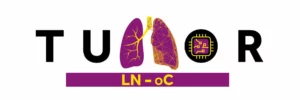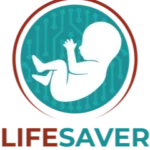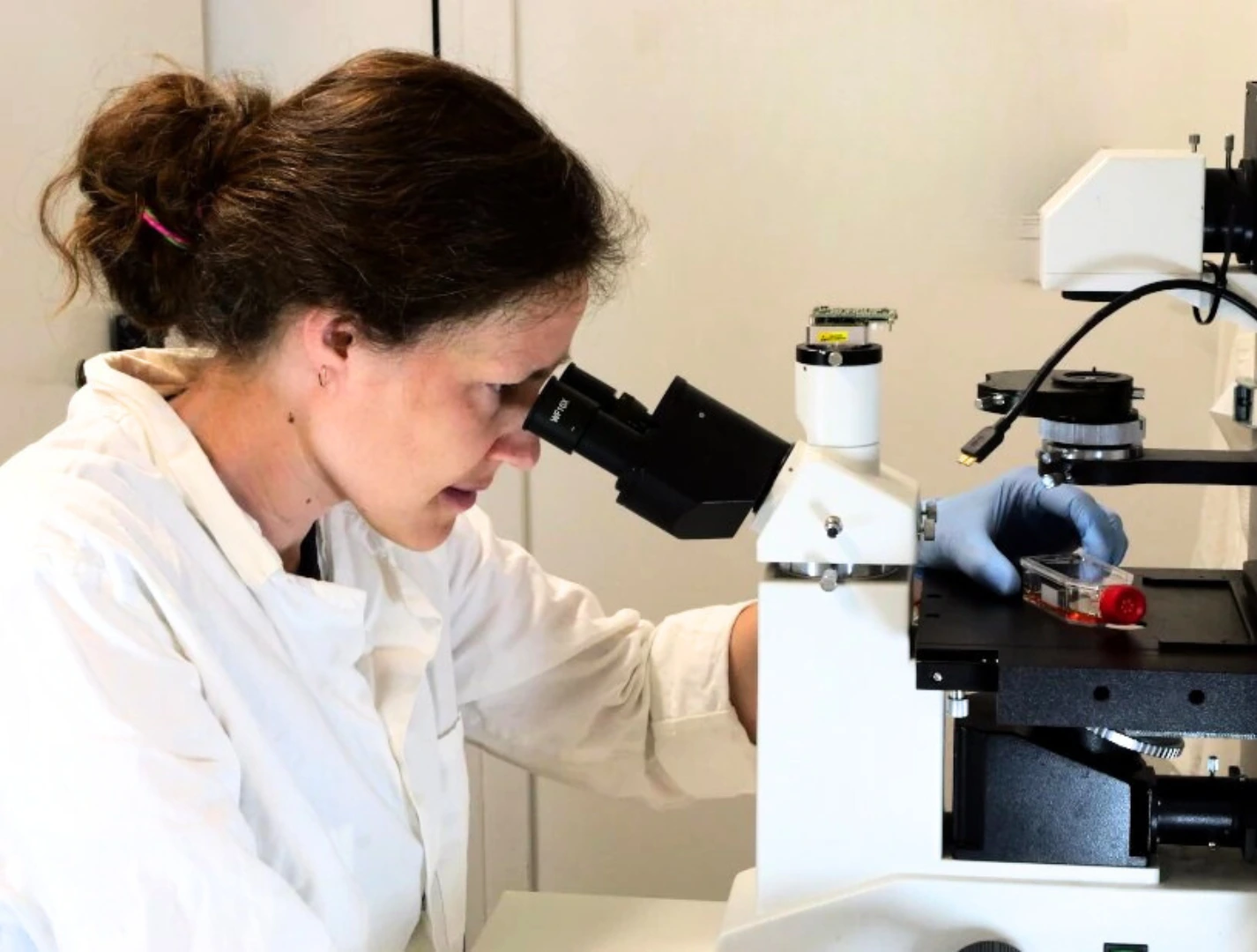Widening participation and strengthening the European Research Area (WIDERA)
Work Programme 2026-2027
Writer
Celeste Chidiac, PhD
Keywords
Microfluidic Devices, Intelligent Microfluidics, Artificial Intelligence, Machine Learning
Opening
Dec 2025, Jan/Apr/Sep/Dec 2026, Apr/May 2027
Deadline
Mar/Ap/Sep 2026, Mar/Sep/Nov 2027
Keywords
Intelligent Microfluidics
Deep Learning
Microfluidic Devices
Artificial Intelligence
Machine Learning
widening access and excellence
ethical and inclusive research
open/sustainable ERA landscapes
Your microfluidic SME partner for Horizon Europe!
We take care of microfluidic engineering, work on valorization and optimize the proposal with you
WIDERA 2026-2027
Calls ordered by microfluidic relevance
We have sorted the calls for projects from WIDERA 2026-2027 according to the impact that microfluidics can have on the calls for projects and related topics. We are sharing our analysis in case it can help you with project funding efforts. And, of course, if our expertise can be of use to you, we would be delighted to discuss it further.

How to read the stars in terms of % of microfluidic technologies’ relevance for the call:
By microfluidic relevance, we mean the relevance of using microfluidic technologies for the topic cited. But also, to a lesser extent, what a microfluidic laboratory or SME could contribute to the topic (mainly for calls with low relevance to microfluidic technologies).
Relevance (%) | 90-100 | 80-89 | 70-79 | 60-69 | 50-59 | 40-49 | 30-39 | 20-29 | 10-19 | 0-9 |
Relevance (*) | ***** | **** | *** | ** | * | – | – – | – – – | – – – – | – – – – – |
The work programme draft can be found in the following link: WIDERA
(Details for all topics are provided below, ordered by decreasing microfluidic relevance)
Discover more!
Horizon Europe WIDERA 2026-2027 Calls ordered by microfluidic relevance
Download the WIDERA 2026-2027 Call Calendar
***** HORIZON‑WIDERA‑2027‑01‑WIDENING‑01 – EIC PRE‑ACCELERATOR
- Type of Action: CSA
- Opening 05 May 2027, deadline 18 Nov 2027
- Budget (topic, M€): 40.00
- Expected EU contribution per project (M€): 0.30-0.50
- # projects: 100
Scientific focus
- Mono‑beneficiary support for SMEs established in Widening Countries to accelerate deep‑tech commercialization and pave a pipeline towards the EIC Accelerator.
- Grants sized for feasibility, validation, early traction activities; funding rate 70%.
- Expected to combine business services, technical maturation, IP strategy, market discovery, investor readiness, and links to national/EU instruments.
- Orients projects to raise TRL, de‑risk adoption, and crowd‑in private investment.
- Designed to be country‑contextualized while building EU‑level excellence pathways.
Why microfluidics could be impactful
- Microfluidics is textbook deep‑tech: hardware + wet‑lab validation + regulated markets (diagnostics, biotech) – fits the pre‑accelerator’s maturation and business‑building services.
- Funding can underwrite beta prototypes, biological validation, design‑for‑manufacture (polymer chips), biocompatibility testing, and QMS steps toward ISO 13485.
- Supports IP bundling (chips, surface chemistries, cartridges), freedom‑to‑operate checks, and clinical KOL engagement.
- Bridges to EIC Accelerator readiness and to industrial pilots with OEMs/instrument makers.
***** HORIZON‑WIDERA‑2026‑03‑WIDENING‑01 – EXCELLENCE HUBS
- Type of Action: CSA
- Opening 02 Sep 2026, deadline 04 Mar 2027
- Budget (topic, M€): 100.00
- Expected/project: 1.50-4.50
- # projects: 30
Scientific focus
- Networks of regional innovation ecosystems in Widening Countries, built on quadruple‑helix collaborations (academia, business/SMEs, public sector, citizens).
- Mandatory joint cross‑border R&I strategy aligned with Smart Specialization and EU priorities.
- R&I component (distinct work package) to close knowledge gaps and generate tech with market potential; not the dominant cost share.
- Investment plans, pilot/demonstrator pre‑planning, and secondments to cement durable collaboration and industrial uptake.
Why microfluidics is relevant
- Microfluidics can serve as the industrial anchor for bio‑med/bioprocess/diagnostics hubs, co‑authoring the strategy and shaping pilot lines for polymer chip manufacturing.
- Provides application‑driven R&I (organ‑on‑chip, cell culture‑on‑chip, single‑cell analytics) to validate ecosystem strengths and catalyze investor interest.
- Helps design innovation pathways (GMP‑adjacent cleanroom microfabrication, consumables scale‑up), supplier networks, and standardization (interfaces, cartridges).
- Leads skills & training modules (microfluidics design, biocompatibility, entrepreneurship), strengthens university‑industry pipelines, and valorization plans.
- Enhances synergies with cohesion funds and regional healthtech strategies via demonstrators co‑sited in hospitals/bioclusters.
**** HORIZON‑WIDERA‑2026‑04‑WIDENING‑01 – HOP‑ON FACILITY
- Type of Action: RIA
- Opening 13 Jan/23 Apr 2026, deadline 24 Sep 2026
- Budget (topic, M€): 30.00
- Expected/project: 0.20-0.60
- # projects: 60
Scientific focus
- Adds one new beneficiary from a Widening Country to an ongoing Horizon Europe Pillar II or EIC Pathfinder action that currently has no Widening entity.
- Proposal is submitted by the coordinator of the ongoing action; ≥90% of the grant goes to the new Widening beneficiary (≤10% coordination fee).
- The new beneficiary must deliver a clearly defined task/WP with demonstrable R&I added value.
Why microfluidics is relevant
- Contributions fit well: on‑chip assays, bioprocess analytics, POC diagnostics modules, standardized testbeds (reproducibility, QC).
- Microfluidics’ specialized prototyping + biology enable quick impact within the residual project time.
*** HORIZON‑WIDERA‑2026‑06‑WIDENING‑01 – ERA FELLOWSHIPS
- Type of Action: TMA Postdoctoral Fellowships – European Fellowships
- Opening 09 Apr 2026, deadline 09 Sep 2026
- Budget (topic, M€): 8.00
- # projects: 50
Scientific focus
- Mirrors MSCA‑PF rules but reserved budget for Widening to enhance mobility/excellence.
- Supports postdoctoral fellows hosted in eligible organizations; strengthens career development, training, and intersectoral exposure.
Why microfluidics is relevant
- Host postdocs to advance organ‑on‑chip, cell culture micro‑bioreactors, single‑cell workflows, polymer chip process optimization.
- Fellows can drive open protocols, standardized datasets, and validation in clinical/industrial settings through secondments with microfluidics’ partners.
- Useful to seed future IA/RIA proposals and recruit permanent talent.
*** HORIZON‑WIDERA‑2027‑03‑WIDENING‑01 – ERA FELLOWSHIPS
- Type of Action: TMA Postdoctoral Fellowships – European Fellowships
- Opening 06/07 Apr 2027, deadline 08/14 Sep 2027
- Budget (topic, M€): 8.00
- Estimated # projects: 50
Scientific focus & microfluidic fit: Same structure/benefits as 2026
** HORIZON‑WIDERA‑2026‑02‑WIDENING‑01 – TWINNING
- Type of Action: CSA
- Opening 08 Jan 2026, deadline 09 Apr 2026
- Budget (topic, M€): 258.00
- Expected/project: 0.80-1.50
- # projects: 210
Scientific focus
- Capacity‑building partnerships between a Widening coordinator and at least two leading institutions (HEIs/RPOs) in the chosen field.
- Activities include training, short visits/secondments, summer schools/workshops, management upskilling, knowledge transfer, and limited joint R&I.
- Aim: raise research excellence & management quality, embed ERA practices, ensure sustainability beyond the grant.
Why microfluidics is relevant
- As an industrial training partner and application use‑case provider, microfluidics can help shape practice‑oriented curricula (chip design, fluidic interfacing, cell‑on‑chip), host short secondments, and co‑define benchmarks/testbeds.
** HORIZON‑WIDERA‑2026‑07‑ERA‑04 – PILLAR II: PILOTING INNOVATIVE APPROACHES TO SUPPORT ACADEMIC STARTUPS & SPINOFFS
- Type of Action: CSA
- Opening 10 Dec 2025, deadline 24 Mar 2026
- Call: Call – Enhancing the European R&I system (2026)
- Budget (topic, M€): 4.00
- Expected/project: ~2.00
Scientific focus
- Pilot services/models to support academic spinoffs/startups: guidance, methodologies, test‑and‑validate with users/markets, and knowledge valorization synergies.
- Large stakeholder coverage; portfolio learning; links to the EU Knowledge Valorization Platform.
Why microfluidics is relevant
- Provides specialized prototyping facilities and go‑to‑market playbooks (OEM partnering, cartridge recurring revenue).
- Adds entrepreneurship training specific to lab hardware + bio‑validation.
** HORIZON‑WIDERA‑2027‑04‑ERA‑02 – PILLAR II: TALENT ECOSYSTEMS FOR ATTRACTIVE EARLY RESEARCH CAREERS
- Type of Action: CSA
- Call: Call – Enhancing the European R&I system (2027)
- Opening 08 Dec 2026, deadline 11 Mar 2027
- Budget (topic, M€): 30.00
- Expected/project: 2.00-4.00
- # projects: 12
Scientific focus
- Builds ecosystems that improve early‑career attractiveness, mobility, intersectoral paths, aligned with the European framework for research careers.
- Activities could span training, placements, services, and policy interfaces across institutions and sectors.
Why microfluidics is relevant
- Microfluidics contributes to industry placements and mentored projects (microfabrication, assay integration, device reliability), sharpening employability and industry-ready skills.
- Co‑designs competence frameworks for bio‑microfabrication and open‑bench standards.
* HORIZON‑WIDERA‑2026‑07‑ERA‑03 – PILLAR II: STRENGTHENING ECOSYSTEMS FOR OPEN, ETHICAL & SUSTAINABLE ERA
- Type of Action: CSA
- Call: Call – Enhancing the European R&I system (2026)
- Opening 10 Dec 2025, deadline 24 Mar 2026
- Budget (topic, M€): 6.00
- Expected/project: 2.00
- # projects: 3
Scientific focus
- Ecosystem‑level actions for research ethics & integrity, environmentally sustainable science, open science, knowledge valorization, research careers.
- Examples include networks for green labs (energy/waste), EOSC‑aligned data practices, international open‑science standards.
Why microfluidics is relevant
- Microfluidics enables lower‑reagent/low‑waste experimentation – a core lever for green labs; microfluidics can contribute protocols & benchmarks.
- Standardization of FAIR data and reproducible chip assays align with open‑science ecosystem building.
* HORIZON‑WIDERA‑2026‑07‑ERA‑08 – PILLAR IV: ADVANCING KNOWLEDGE FOR ERA
- Type of Action: RIA
- Call: Call – Enhancing the European R&I system (2026)
- Opening 10 Dec 2025, deadline 24 Mar 2026
- Budget (topic, M€): 16.00
- Expected/project: 1.50-2.50
- # projects: 8
Scientific focus
- Research to create new methods/evidence supporting ERA policy design & monitoring (open science, research careers, integrity & ethics, gender equality, etc.).
- Produces policy‑relevant indicators, frameworks, and tested practices for implementation.
Why microfluidics is relevant
- Microfluidics can co-design reproducibility toolkits (standard chips, reference materials, QC metrics) as case studies feeding ERA metrics.
- Offers empirical data on environmental impacts vs conventional lab workflows (reagent savings, waste).
* HORIZON‑WIDERA‑2026‑07‑ERA‑01 – PILLAR I: ACCELERATING OPEN ACCESS & RESEARCH‑ASSESSMENT REFORMS IN ERA
- Type of Action: CSA
- Call: Call – Enhancing the European R&I system (2026)
- Opening 10 Dec 2025, deadline 24 Mar 2026
- Budget (topic, M€): 6.00
- Expected/project: 2.00-4.00
- # projects: 2
Scientific focus
- Cascading grants to support non‑profit OA models for scholarly societies and institutional reforms aligned with ARRA/CoARA.
- Shifts away from JIF/h‑index; promotes qualitative peer review, recognition of diverse outputs (citizen science, science for policy).
Why microfluidics is relevant
- Microfluidics can pilot OA data & methods for chip assays, contribute to assessment criteria recognizing engineering & translational outputs.
* HORIZON‑WIDERA‑2027‑04‑ERA‑01 – PILLAR I: OPEN ACCESS POLICIES VIA RIGHTS RETENTION
- Type of Action: CSA
- Call: Call – Enhancing the European R&I system (2027)
- Opening 08 Dec 2026, deadline 11 Mar 2027
- Budget (topic, M€): 2.00
- # projects: 1
Scientific focus
- Supports institutional rights‑retention policies to enable immediate OA; outputs include guidance, tools, training, and aligned policies across RPOs.
- Microfluidics intersects through OA of methods/data while safeguarding product IP (chips/consumables) – informing balanced policies.
– HORIZON‑WIDERA‑2026‑07‑ERA‑02 – PILLAR I: BUILDING INSTITUTIONAL CAPACITIES FOR ETHICAL, EQUITABLE, OPEN & INCLUSIVE ERA
- Type of Action: Lump-sum CSA
- Call: Call – Enhancing the European R&I system (2026)
- Opening 10 Dec 2025, deadline 24 Mar 2026
- Budget (topic, M€): 9.00
- Expected/project: 1.50-2.00
- # projects: 6
Scientific focus
- Institutional capacity‑building under four areas: ethics & integrity, inclusive gender equality, and equity in open science.
Why microfluidics is relevant
- Provides industry perspective to implement ethics-by‑design for human/animal‑on‑chip models, data equity, and open‑science skills.
– HORIZON‑WIDERA‑2026‑07‑ERA‑05 – PILLAR III: FOSTERING CITIZEN ENGAGEMENT FOR MORE RESPONSIBLE & DEMOCRATIC R&I
- Type of Action: CSA
- Call: Call – Enhancing the European R&I system (2026)
- Opening 10 Dec 2025, deadline 24 Mar 2026
- Budget (topic, M€): 2.00
- Expected/project: ~1.00
- # projects: 2
Scientific focus
- Develop approaches/guidelines for citizen participation & science communication; address equity & inclusion; portfolio balance across sub‑areas.
- Microfluidics can contribute engagement formats (e.g., lab‑to‑citizen demos using biochips), but impact is indirect
– – HORIZON‑WIDERA‑2026‑07‑ERA‑06 – PILLAR III: EUROPEAN CITIZENS’ HACKATHON CHAMPIONSHIP
- Type of Action: CSA
- Call: Call – Enhancing the European R&I system (2026)
- Opening 10 Dec 2025, deadline 24 Mar 2026
- Budget (topic, M€): 3.00
- Expected/project: ~3.00
- # projects: 1
Scientific focus
- Pan‑EU citizen hackathon format; mobilization, inclusion, portfolio learning.
- Potential brand/CSR value via challenge sponsorships; limited R&I depth for microfluidics.
– – HORIZON‑WIDERA‑2027‑04‑ERA‑04 – Pillar III: PROMOTING PUBLIC ENGAGEMENT IN R&I & SCIENTIFIC LITERACY
- Type of Action: CSA
- Call: Call – Enhancing the European R&I system (2027)
- Opening 08 Dec 2026, deadline 11 Mar 2027
- Budget (topic, M€): 2.00
- Expected/project: ~1.00
- # projects: 2
Scientific focus
- Two selectable areas: (1) Youth, science & democracy, (2) Guiding principles for inclusive engagement; aims at broad, inclusive participation and evidence-based practice.
- Microfluidics can contribute youth labs / hands‑on demos with safe fluidics kits and career storytelling; limited direct R&I.
– – HORIZON‑WIDERA‑2026‑07‑ERA‑07 – PILLAR III: SCIENCE COMES TO TOWN 2028
- Type of Action: CSA
- Call: Call – Enhancing the European R&I system (2026)
- Opening 10 Dec 2025, deadline 24 Mar 2026
- Budget (topic, M€): 6.00
- # projects: 1
Scientific focus
- Multi‑city science engagement (incl. EUCYS & EU TalentOn); requires city authority commitments and co‑funding/sponsorship leverage.
– – HORIZON‑WIDERA‑2027‑04‑ERA‑03 – PILLAR III: SCIENCE COMES TO TOWN 2029
- Type of Action: CSA
- Call: Call – Enhancing the European R&I system (2027)
- Opening 08 Dec 2026, deadline 11 Mar 2027
- Budget (topic, M€): 6.00
- # projects: 1
– – – HORIZON‑WIDERA‑2027‑02‑WIDENING‑01 – ERA CHAIRS
- Type of Action: CSA
- Call: Call – ERA Chairs and Research Managers (2027)
- Opening 06/07 Apr 2027, deadline 08/14 Sep 2027
- Budget (topic, M€): 175.00
- Expected/project: 1.50-2.50
- # projects: 80
Scientific focus
- Supports appointment of ERA Chair holders and structural reforms in Widening host organizations; typically, mono-beneficiary host institutions; long-term capacity effects.
- SMEs are not typical beneficiaries (fit mainly as external stakeholders).
Why microfluidics is only tangentially relevant:
- Possible advisory/adjunct role for curriculum/industry co‑creation; not a primary funding route for microfluidics.
– – – HORIZON‑WIDERA‑2027‑02‑WIDENING‑02 – ERA RESEARCH MANAGERS
- Type of Action: CSA
- Call: Call – ERA Chairs and Research Managers (2027)
- Opening 06/07 Apr 2027, deadline 08/14 Sep 2027
- Budget (topic, M€): 65.00
- Expected/project: 1.50-2.50
- # projects: 30
Scientific focus & microfluidics fit
- Builds institutional research‑management capacity and professional networks in Widening; SME role at best training provider/mentor on innovation management.
– – – HORIZON‑WIDERA‑2026‑05‑WIDENING‑01 – RESEARCH MANAGEMENT FACILITY
- Type of Action: CSA
- Opening 13 Jan/23 Apr 2026, deadline 24 Sep 2026
- Budget (topic, M€): 7.00
- # projects: 1
Scientific focus & microfluidics fit
- One facility‑like consortium to deliver tailored support (advice, trainings, services) that helps institutions in Widening Countries build research‑management capacity; the Facility does not fund implementation at beneficiaries.
- Microfluidics’ angle: niche training modules (e.g., regulated R&I, valorization for lab‑hardware).
– – – – HORIZON‑WIDERA‑2026‑01‑WIDENING‑01 – TEAMING SYNERGIES
- Type of Action: CSA
- Call: Call – Teaming Synergies
- Opening 13 Jan/23 Apr 2026, deadline 24 Sep 2026
- Budget (topic, M€): 7.00
- # projects: 1
Scientific focus
- Builds coordinated platforms & synergies to sustain/scale earlier Teaming Centres of Excellence using multiple funding streams (cohesion, national, private).
- Very narrow eligibility (entities with Teaming track record). Microfluidics’ role is ancillary (training/industry ties).
Notes useful to microfluidic entity (quick strategy takeaways)
- If microfluidic entity (or a controlled SME/spinoff) is established in a Widening Country, prioritize EIC Pre‑accelerator – Widening (2027) and Hop‑On (2026) for direct, near‑term business value.
- Excellence Hubs is the consortium play to shape a regional microfluidics healthtech node with durable pilots and investment plans (2026-2027 window).
- ERA Fellowships (both years) are low‑friction talent instruments to expand the organ‑on‑chip and polymer chip R&D pipeline at/with a microfluidic entity.
Find all these information in the pdf below
The MIC already brings its expertise in microfluidics to Horizon Europe:
H2020-NMBP-TR-IND-2020

Microfluidic platform to study the interaction of cancer cells with lymphatic tissue
H2020-LC-GD-2020-3

Toxicology assessment of pharmaceutical products on a placenta-on-chip model
FAQ - Horizon Europe WIDERA 2026-2027 ordered by microfluidic relevance
What is WIDERA?
WIDERA is the part of Horizon Europe that supports the development of research excellence and strengthens the European Research Area – open science, careers, ethics, and knowledge valorization, in “widening countries”. it gives them the funding and skills that help their tech development; it’s not the classical Pillar II research.
Which 2026-2027 topics best fit microfluidics?
- EIC Pre-accelerator – Widening (2027): deep-tech pre-acceleration for SMEs.
- Excellence Hubs (2026): build regional nodes with real pilots.
- Hop-On Facility (2026): add a widening-country partner to an ongoing Pillar II/Pathfinder project.
- ERA Fellowships (2026 & 2027): bring postdocs into organ-on-chip, single-cell, polymer-chip process work.
We’re a microfluidic SME in a widening country. How can we get funding quickly?
You’ve got two fast tracks worth your time, both realistic and built for momentum.
- Widening EIC Pre-accelerator.
It covers feasibility and validation work, setting up your quality management system, building beta units, doing biocompatibility checks, and testing market assumptions. Basically, it helps you clean up the messy middle before you go for the big one: the EIC Accelerator. The evaluators like seeing that you’ve already handled the boring but deadly parts, QMS, prototype reliability, and first client talks. That’s the de-risking they mean.
- Hop-On Facility.
If speed matters more than ownership, this is the sneaky move. Look for a running Pillar II or Pathfinder project missing a widening partner. Offer a neat, self-contained work package, an on-chip assay module, a QC testbed, maybe a polymer microfabrication add-on. You get access to Horizon funding without having to build a full proposal from scratch. The coordinator wins political points for adding a widening partner, and you gain credibility for the next round.
What does a strong microfluidic role in an Excellence Hub look like?
A strong role isn’t about showing off fancy chips or stacking demos at conferences. It’s about four layers that work together, quietly but tightly.
First, co-writing the regional R&I strategy with policymakers. Sit at the same table, shape the agenda, not just react to it. If the regional funding map doesn’t mention microfluidics, you’ll always be the afterthought.
Second, the demonstrator work package has to land locally. Think organ-on-a-chip for the hospital next door or a single-cell system that a biotech can actually test.
Third, pilot-line pre-planning. This is where most labs get lost. Sketch cleanroom or GMP-adjacent flows early, know your suppliers, and design for manufacturability, especially if you’re using polymers. No one wants a prototype that dies in scale-up.
Fourth, the skills and secondments layer. Swap people, not just emails. Let young engineers see how design rules meet biocompatibility, assay integration, and hardware entrepreneurship. That mix builds future hires better than any training course.
Are ERA Fellowships actually useful for microfluidics teams?
They can be, yes. ERA works like MSCA-PF but keeps some cash for widening excellence. If you host a fellow on hands-on cell-culture micro-bioreactors or polymer-chip process tuning, and give them a short industry secondment, it usually shows off. I’ve seen those fellowships turn into RIAs or IAs down the line, and half the time, the fellow ends up staying on as staff.
What makes a competitive WIDERA proposal when microfluidics is involved?
Clarity. Reviewers love things that can be measured, not buzzwords. Use standard interfaces, real calibration artefacts, and FAIR datasets that don’t leak IP. Map your adoption path straight: OEM integration, hospital pilots, cartridge life-cycle metrics, compliance milestones.
The proposal has to show the multiplier effect, too: new suppliers, training cohorts, and regional stickiness. A Hub that lasts beyond the grant is more convincing than one that looks perfect on paper.
We mostly build prototypes. Anything in WIDERA for commercialization preparation?
Yes. The Widening EIC Pre-accelerator fits that gap. It funds early de-risking: beta builds, biocompatibility checks, regulatory prep, and even first traction with OEMs or clinical KOLs. It’s not the full EIC Accelerator, but it smooths the road if you’re in diagnostics or biotech instruments. It’s the stage where you clean up your tech before real investors or regulators see it.
Where does the MIC make a change?
It’s not one big thing; it’s a few small ones done early and done right.
First, technical depth. The kind that comes from people who’ve actually run fluid through a chip, not just simulated it. Organ-on-a-chip work, assay integration, microfabrication, that mix of lab grit and design sense. You either have it or you don’t, and reviewers can tell in two pages.
Then there’s Horizon know-how. Knowing how to pull together a consortium that doesn’t implode halfway and how to line up letters of support.
And the third bit, SME pragmatism. Having someone in the room who talks about manufacturability, cost per unit, CE marking, and biocompatibility headaches. The kind of talk that scientists find boring but funders quietly trust.
Honestly, every time an SME joins early, things start clicking. From what we’ve seen, teams that involve SMEs from day one achieve about twice the success rate as the official averages. Coincidence? Maybe. But it keeps happening.



